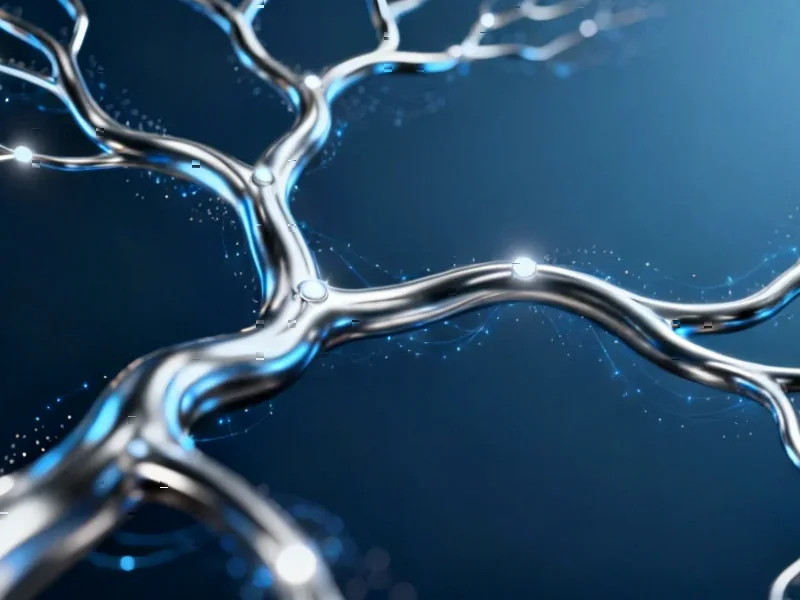Breakthrough in Causal Discovery Methods
Researchers have developed an enhanced version of the greedy equivalence search (GES) algorithm that reportedly improves both efficiency and accuracy in learning Bayesian network structures, according to a recent study published in Scientific Reports. The new approach uses relative entropy to establish superior initial graphs, addressing what analysts suggest has been a fundamental limitation in traditional GES implementation.
Table of Contents
The Challenge of Bayesian Network Structure Learning
Bayesian networks serve as crucial probabilistic graphical models that represent causal relationships between random variables, with applications spanning from protein interaction prediction to telecom fraud detection and COVID-19 analysis. The process of recovering the directed acyclic graph (DAG) that forms a Bayesian network’s structure represents what sources indicate is a fundamental challenge in artificial intelligence. Existing methods reportedly fall into several categories: function-based approaches, constraint-based methods, score-and-search algorithms, and hybrid techniques.
According to the report, GES operates in equivalence class space (E-space), which is generally simpler than DAG space because it contains fewer candidate structures and avoids some inefficient operations. However, the study states that traditional GES encounters high complexity when beginning searches from an empty graph, limiting its performance in practical applications.
Three-Phase Solution Using Relative Entropy
The newly proposed algorithm employs a three-phase approach to overcome GES limitations. First, researchers designed a measure based on relative entropy—a concept from information theory—to evaluate relationships between variables. Then, variables are connected according to the quantified dependency strengths, and the resulting graph is transformed into E-space. Finally, this refined graph serves as the initial starting point for GES optimization in E-space.
Analysts suggest this approach represents a significant departure from traditional methods because it provides GES with an equivalence class containing the strongest dependencies rather than beginning from an empty graph. The report states that this strategic starting position allows the algorithm to navigate the search space more efficiently while simultaneously improving the local optimum of GES’s forward phase.
Comparative Performance Analysis
Extensive testing reportedly demonstrates that the enhanced algorithm outperforms standard GES in both efficiency and accuracy. Researchers conducted comparisons on well-known benchmarks and real-world COVID-19 pandemic data from the United Kingdom, with the method also evaluated against other state-of-the-art approaches.
The study indicates that while numerous attempts have been made to improve GES over the past two decades—including combining it with genetic algorithms, restricting search spaces, parallelizing search phases, and incorporating metaheuristic techniques—this new relative entropy-based approach provides unique advantages, particularly for discrete data analysis. Sources note that some recent continuous optimization methods using deep learning have generally performed poorly on discrete data, making this development particularly significant for certain applications.
Broader Implications and Future Directions
This advancement in Bayesian network structure learning could have substantial implications across multiple fields where causal discovery is essential. The report states that improved efficiency and accuracy in determining causal mechanisms could benefit areas including medical research, environmental science, financial risk assessment, and artificial intelligence explainability.
According to researchers, future work will focus on further refining the dependency measurement techniques and exploring applications to larger-scale problems. The methodology represents what analysts suggest is a promising direction for enhancing causal discovery algorithms while maintaining the theoretical foundations that make Bayesian networks valuable for reasoning under uncertainty.
Related Articles You May Find Interesting
- Navigating the AI Safety Imperative as Technology Advances
- Swedish Startup Cytely Secures €3M to Accelerate Lab Research with AI-Powered Mi
- AI Models Achieve Over 98% Accuracy in Predicting Mental Health Conditions Using
- AI Consulting Tools Emerge for Small Business Market, Report Reveals
- Court Orders Meta to Release Internal Teen Harm Research Documents
References
- http://en.wikipedia.org/wiki/Null_graph
- http://en.wikipedia.org/wiki/Graph_(discrete_mathematics)
- http://en.wikipedia.org/wiki/Equivalence_class
- http://en.wikipedia.org/wiki/Directed_acyclic_graph
- http://en.wikipedia.org/wiki/Vertex_(graph_theory)
This article aggregates information from publicly available sources. All trademarks and copyrights belong to their respective owners.
Note: Featured image is for illustrative purposes only and does not represent any specific product, service, or entity mentioned in this article.



